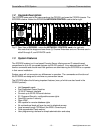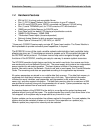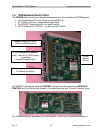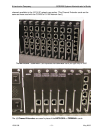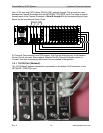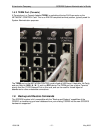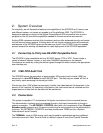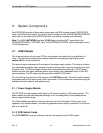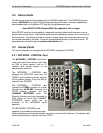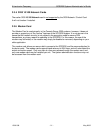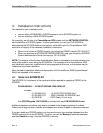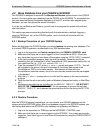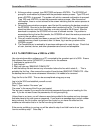
A Lantronix Company SCS3230 System Administrator's Guide
15.00.038 - 17 - May 2002
cards. By reducing the number of Channel Extender ports, the maximum number of available
connections for 10/100 network access is reduced by four sessions for each Terminal Card
installed. Illustrations showing a mixture of Channel Extender cards and Terminal Cards are
found on pages 11 and 16 of this Guide.
An optional MODEM connection is also available, however its connections are not 'secure' and
its use is not recommended except in those instances when security will not be compromised by
dial-in access using the modem. The SCS3230's modem connection is not subject to the Linux
security controls of the other access ports.
2.4 Security Passwords
The System Administrator may define up to 200 user profiles. Each user is assigned a unique
password by the system administrator. The system forces the user to change the password the
first time the user attempts to connect to any servers. After the users have changed their
passwords, the system will not prompt for a change. The users change their passwords at
whatever interval they feel is necessary.
The operating system is subject to Linux security constraints, including sysadmin and root level
security. Users cannot access the sysadmin layer or the root layer of the system.
2.5 Interface
Interfaces to the DEVICE and TERMINAL cards are all RS-232C compliant. These ports are
configured through the TERM port on the NETWORK / CONTROL card using a local Console,
or via network connection through your TCP/IP network. All system access is password
protected.
Each DEVICE port and TERMINAL has settings for baud rate, stop bits, parity, number of data
bits, flow control, and port type (i.e., DTE or DCE). The TERM port (for your Console) on the
NETWORK / CONTROL card has a fixed data format of 9600 / 8/ N / 1, and DCE.
The NETWORK / CONTROL card connects over a network using TCP/IP on 10- or 100-baseT
at 10/100 Mbits (auto-negotiating). The 10/100 port on this card is assigned an IP address, a
subnet mask, a default gateway, and an optional secondary destination path by Console
configuration using the TERM port on this card during the initial setup of the system.
The optional MODEM card connects directly to a conventional modular phone jack (RJ11) to
interface with a telephone network. The sys admin may designate a modem initialization string,
or may use the default modem initialization string, which allows auto-answering on one ring. The
modem provides card-edge visual status indicators.
Note: For 'secure' installations, the Modem should not be used. Modem access is not
encrypted and/or secure and could allow unauthorized access to system information. However,
if modem access is limited to internal administrative access, the modem may provide an
additional means of system access in the event your network is down.




